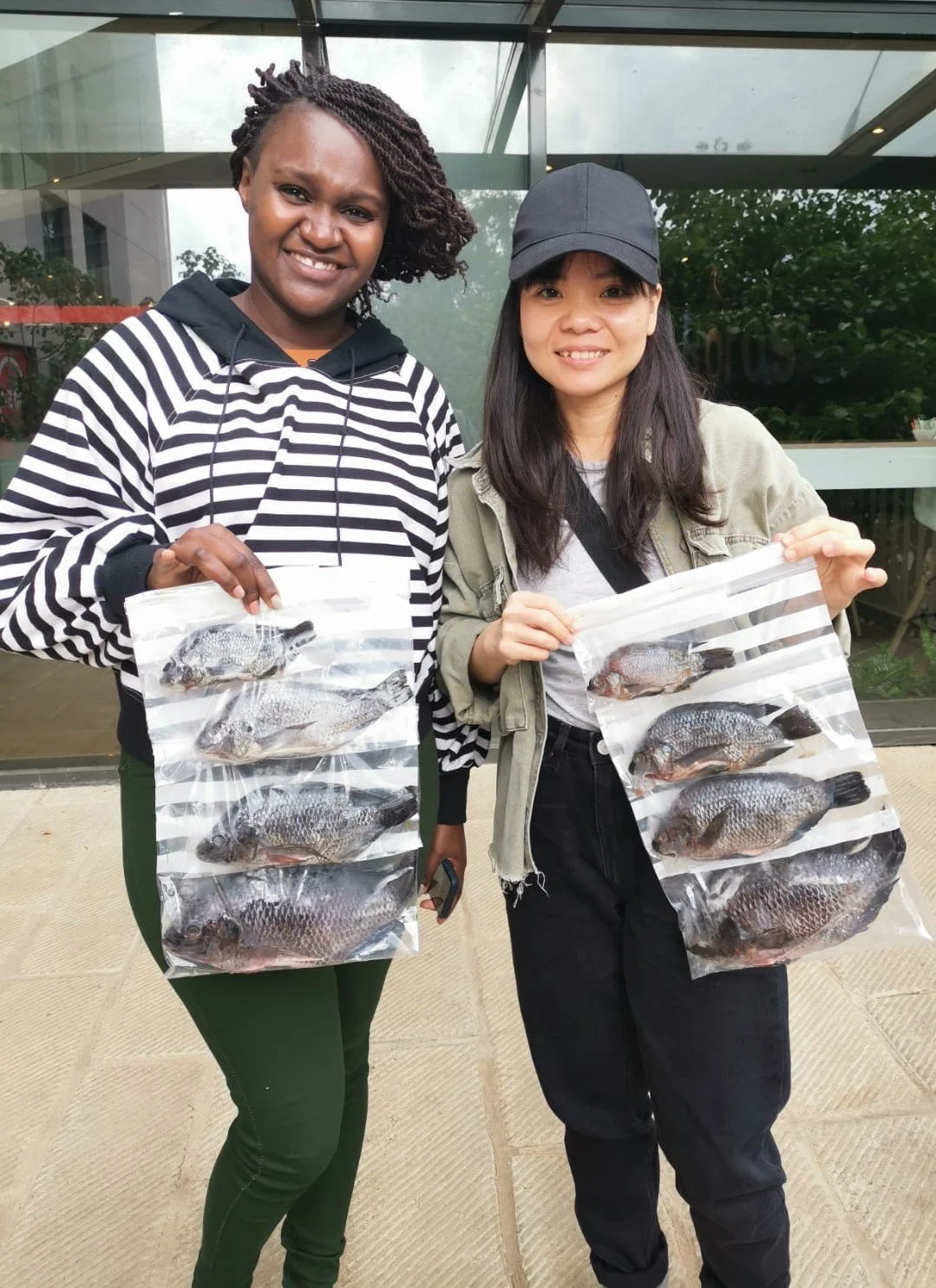The partnership
A partnership between two aquaculture pioneers in Kenya - Victory Farms Ltd, and Unga Farm Care (EA) Ltd. (UFCEA) – and researchers from the Institute of Aquaculture at the University of Stirling (UoS), will assess the impacts of shortening the commercial production cycle of a local strain of caged tilapia to produce higher yields of small-sized fish (200g vs. 400g fish). A growing market for this fish exists in much of the region and such an approach can go further than just filling a large market niche, as it also improves feed efficiency in production, potentially eliminating costly mono-sex technology, and enhancing cash flow for farmers. Such an approach becomes more economically viable for small-to-medium sized enterprises in Kenya. Smaller-sized, feed efficient fish also have higher micronutrient density and lower environmental impacts.
The tilapia growth trials are taking place at Victory Farms Ltd to assess the biological and economic implications of increasing stocking density and shortening the commercial production cycle of a local strain of caged tilapia.
Alexander (Olek) Kaminski, a PhD candidate at the IoA, is leading this investigation. The work involves a technical grow-out trial as well as consumer surveys, enabling an assessment of technical capacity as well as market demand.
Technical Trial
The on-site trial will include three treatments. One treatment will double stock 40g fingerlings and grow them to an average weight of 200g; whilst a control treatment grows fish to the standard 400g weight. A third treatment will do the same but harvest half of the cage at 200g and let the remaining fish grow to 400g. The latter treatment will provide a greater insight into the economics of feeding smaller fish in one cage and then growing them to full size, potentially saving on feed costs. The results of such a trial are applicable to tilapia production systems in the whole region and have significant consequences on how feeds can be utilised by small-scale production systems in sub-Saharan Africa.
Fish are sampled fish every week for the first 3 months and then every month until full cycle. Data points about fish mortality, amount of feed, fish growth, water quality are collected
Measuring fish length and weight to record data on fish growth
Sample weights with counts also provides information on biomass and stock density
Alex Pounds is supporting this project by managing the technical trial at Victory Farms. Pounds is also working on her PhD, examining the effect of failing fisheries and nascent aquaculture on micronutrient intake of rural communities around the Kenya part of Lake Victoria.
Consumer Survey
Winnie (Victory Farms) & Tien with samples of different sized tilapia
Incentives to produce small-sized fish depends on adequate demand and affordability among poorer Kenyan consumers. The second component of the research will collect data on the perceptions and food provisioning practices of consumers in urban and peri-urban Kenya to gain a better understanding of how fish of different sizes are prepared and consumed. This consumer perception survey will be led by Kaminski. Tien Nguyen, a current MSc student in Sustainable Aquaculture at the IoA, is supporting Olek with the consumer survey portion of this project. Nguyen is focusing on consumer preferences and purchasing habits in rural communities in Homa Bay, Kenya.
The outputs of this research can have wide-reaching impact. The team plans to publish at least two research papers (one on the results of the trial and one on the results of the consumer perception survey). Both papers will help inform the future production and consumption of farmed tilapia in the region. Such pro-poor, nutrition-sensitive models could be a potential solution to help resource-poor small-scale farmers grow small, nutritious tilapia for poorer consumer segments that demand such products.





